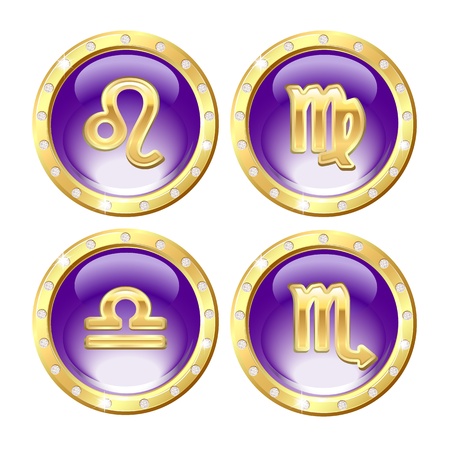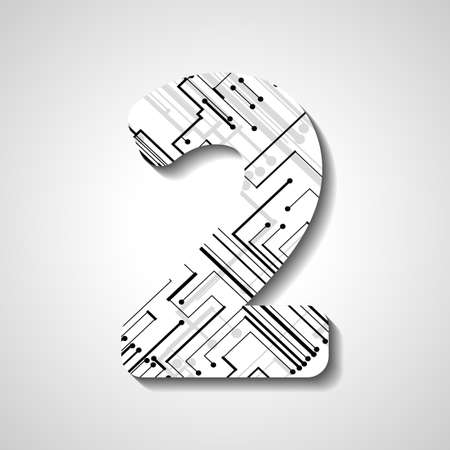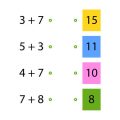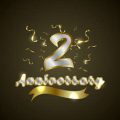1. Introduction to the Elder Futhark
The Elder Futhark is the oldest known runic alphabet, and it holds a special place in both Norse and Germanic history. If you’ve ever seen those mysterious symbols carved on ancient stones or featured in Viking movies, you’ve already had a glimpse of the Elder Futhark. But what exactly is it, and why does it matter?
What Is the Elder Futhark?
The word “Futhark” comes from the first six letters of this runic alphabet: F, U, Th, A, R, and K. The Elder Futhark consists of 24 unique characters, each with its own sound and symbolic meaning. These runes were used from around 150 to 800 AD by early Germanic peoples, including the ancestors of today’s Scandinavians and Germans.
Where Did the Elder Futhark Come From?
The origins of the Elder Futhark are still a bit of a mystery. Most scholars believe it was inspired by earlier alphabets, such as Latin or Etruscan scripts, but adapted for the sounds of early Germanic languages. Runes were carved into stone, wood, bone, and metal—making them durable messengers across centuries.
Historical Context
The period when the Elder Futhark was used was marked by migration, trade, and tribal conflict in Northern Europe. Writing with runes was practical: they were easy to carve, even with simple tools. But runes weren’t just for writing messages or marking ownership—they also held magical and spiritual meanings for their users.
Quick Facts About the Elder Futhark
| Fact | Details |
|---|---|
| Time Period | c. 150–800 AD |
| Number of Runes | 24 |
| Cultures Used By | Norse and Early Germanic Tribes |
| Main Uses | Writing, Magic, Spiritual Purposes |
| Main Materials Found On | Stone, Wood, Metal, Bone |
The Significance of Runes in Norse and Germanic Culture
In ancient times, runes were more than just letters; they were symbols packed with power and mystery. Norse legends often talk about Odin—the chief god—sacrificing himself to discover the secrets of the runes. This story highlights how seriously these cultures took their writing system. Today, people continue to be fascinated by runes because they offer a window into the beliefs and daily lives of our distant ancestors.
2. Structure and Order of the Runes
The Elder Futhark is the oldest known runic alphabet, used by Germanic tribes from around 150 to 800 AD. To really understand the meaning behind each rune, it’s important to get familiar with how this ancient script is organized. The name “Futhark” comes from the first six runes: Fehu, Uruz, Thurisaz, Ansuz, Raidho, and Kenaz. But there’s more to it than just an alphabet – the Elder Futhark is divided into three distinct groups called Ættir (pronounced “ett-ear”), which means “families” or “clans” in Old Norse.
The Three Ættir: Rune Families
The 24 runes of the Elder Futhark are split into three Ættir, with each Ætt containing eight runes. This organization is not random; it adds layers of meaning and helps people learn and remember the order of the runes. Here’s a quick breakdown:
| Ætt (Family) | Runes Included | Associated Themes |
|---|---|---|
| Freyr’s Ætt | Fehu, Uruz, Thurisaz, Ansuz, Raidho, Kenaz, Gebo, Wunjo | Wealth, beginnings, strength, communication, journey, creativity, gifts, joy |
| Heimdall’s Ætt | Hagalaz, Nauthiz, Isa, Jera, Eiwaz (or Eihwaz), Perthro, Algiz, Sowilo | Change, need, stillness, cycles, endurance, mystery, protection, success |
| Tyr’s Ætt | Tiwaz, Berkana, Ehwaz, Mannaz, Laguz, Ingwaz, Dagaz, Othala | Honor, growth, movement, humanity, flow/emotions, fertility/new beginnings, awakening/clarity, heritage/home |
Why Are They Called “Ættir”?
The term “Ættir” connects to the way ancient societies were organized—by family and clan ties. In runic tradition, dividing the runes into these families gives each group a unique energy or theme. Many rune readers see Freyr’s Ætt as focusing on basic needs and early stages in life; Heimdall’s Ætt deals with challenges and transformation; Tyr’s Ætt represents maturity and legacy.
How Each Rune Fits Into Its Family
Each rune within its Ætt carries meaning that matches the overall theme of that family. For example:
- Fehu (Wealth) in Freyr’s Ætt relates to prosperity and beginnings.
- Nauthiz (Need) in Heimdall’s Ætt speaks to facing hardships and finding resilience.
- Tiwaz (Honor) in Tyr’s Ætt is about justice and leadership.
The Practical Side: Why This Structure Matters Today
If you’re learning or using runes for divination or personal insight today in America or anywhere else in the world, understanding this structure can help you see patterns when drawing multiple runes or meditating on their meanings. Grouping them by family can also make memorization easier and add depth to your readings.

3. Meanings and Symbolism of Each Rune
The Elder Futhark is the oldest runic alphabet, made up of 24 unique symbols. Each rune has its own story, meaning, and magical associations. In modern times, people use these runes for inspiration, personal growth, and divination. Let’s dive into the individual meanings, symbolism, and possible uses for each rune in a way that’s easy to understand.
Elder Futhark Runes: Quick Reference Table
| Rune | Name | Symbolism & Meaning | Modern Uses |
|---|---|---|---|
| ᚠ | Fehu | Wealth, prosperity, beginnings | Attracting success or new opportunities |
| ᚢ | Uruz | Strength, health, wild power | Boosting vitality or courage |
| ᚦ | Thurisaz | Protection, challenges, boundaries | Setting limits or facing difficulties head-on |
| ᚨ | Ansuz | Communication, wisdom, divine guidance | Improving communication or seeking advice |
| ᚱ | Raidho | Journey, movement, progress | Navigating life changes or travels |
| ᚲ | Kenaz | Creativity, knowledge, illumination | Sparking inspiration or learning something new |
| ᚷ | Gebo | Gift, partnership, balance in giving and receiving | Nurturing relationships or finding fairness in exchanges |
| ᚹ | Wunjo | Joy, harmony, happiness | Cultivating gratitude or celebrating achievements |
| ᚺ/ᚻ | Hagalaz | Disruption, change, trial by nature | Coping with unexpected events |
| ᚾ | Nauthiz | Need, necessity, overcoming hardship | Pushing through tough times or building resilience |
| ᛁ | Isa | Stillness, pause, focus | Taking time to reflect or slow down |
| ᛃ | Jera | Cyclical change, harvests, reward for effort | Pursuing long-term goals or recognizing progress |
| ᛇ | Eiwaz (Eihwaz) | Transformation, endurance, connection between worlds | Coping with transitions or seeking spiritual insight |
| ᛈ | Perthro | Mystery, fate, secrets revealed | Exploring intuition or embracing the unknown |
| ᛉ | Algiz | Protection , guardianship , higher self | Seeking safety or spiritual support |
| ᛊ/ᛋ | Sowilo | Success , vitality , clarity | Boosting confidence or finding your purpose |
| ᛏ | Tiwaz | Justice , honor , leadership | Standing up for yourself or leading fairly |
| ᛒ | Berkano | Growth , fertility , nurturing | Starting new projects or caring for others |
| ᛖ | Ehwaz | Movement , partnership , trust | Building teamwork or strengthening bonds |
| ᛗ | Mannaz | The self , humanity , community | Focusing on self-improvement or connecting with others |
| ᛚ | Laguz | Flow , intuition , emotions | Listening to your gut feelings or adapting to change |
| ᛜ/ᛝ | Ingwaz | Potential , inner growth , completion | Finishing tasks or preparing for new beginnings < / tc > |
The Magical and Divinatory Uses of Runes Today
You don’t need to be a Viking to use runes in your daily life! Many people draw a single rune each morning for guidance or use them in meditation and journaling. Others might craft amulets using specific runes for protection (like Algiz), creativity (Kenaz), or success (Sowilo). When using runes for divination—much like tarot cards—each symbol brings its own energy and message that can help you reflect on challenges and opportunities ahead.
A Few Tips for Working with Runes:
- If you’re just starting out, pick one rune a week to learn about and notice how its meaning shows up in your life.
- You can combine several runes together to create “bindrunes” for personalized magic—like combining Fehu (wealth) and Wunjo (joy) if you’re hoping for a happy financial boost.
- No matter how you use them—whether as art on your wall or tools for reflection—runes are meant to inspire curiosity and mindfulness.
If you’re curious about diving deeper into rune meanings and practice, keep exploring this fascinating ancient system!
4. Modern Applications and Cultural Influence
The Elder Futhark runes have found a fascinating place in modern American culture. Far beyond their origins as an ancient Germanic alphabet, these symbols now show up in various aspects of daily life, art, literature, and even personal growth practices. Here’s a look at how the runes are used today:
Self-Reflection and Personal Growth
Many people in the United States use Elder Futhark runes for self-reflection, much like tarot cards or other divination tools. Drawing a rune is seen as a way to gain insight into one’s thoughts, challenges, or decisions. Workshops and online resources guide individuals through using runes for meditation or journaling, often encouraging users to focus on the symbolic meanings of each rune.
Tattoo Art
Runic tattoos have become especially popular in America. People choose specific runes that represent qualities like strength, protection, or new beginnings. Sometimes, whole words or phrases are spelled out with runes for a more personalized message. Here’s a simple breakdown of popular choices:
| Rune | Meaning | Common Tattoo Use |
|---|---|---|
| Algiz | Protection | Often placed on arms or shoulders |
| Ansuz | Communication & Wisdom | Seen on wrists or necks |
| Berkana | Growth & New Beginnings | Popular among those starting a new phase in life |
| Tiwaz | Courage & Justice | Favored by those seeking strength during tough times |
Literature and Storytelling
Elder Futhark runes appear in American novels, fantasy series, and comics. Authors use them to add authenticity to Norse-inspired worlds or to provide secret codes and hidden messages for readers to uncover. Runes can be featured on book covers, chapter headings, or within the storylines themselves as magical elements.
Popular Culture and Media
The influence of Elder Futhark runes is also visible in movies, TV shows, video games, and fashion. For example:
- Norse mythology-themed films often include runic inscriptions as part of costumes or set designs.
- Video games like “God of War” and “Assassin’s Creed Valhalla” use runes for powers, puzzles, or lore.
- Clothing brands feature rune-inspired prints on t-shirts, jewelry, and accessories.
Cultural Appreciation vs. Appropriation
As runes become more mainstream in America, conversations about cultural appreciation and respect for their origins grow as well. Many artists and practitioners encourage learning about the historical context of the Elder Futhark before using them as symbols.
5. Tips for Learning and Interpreting Runes
Making Rune Study Practical and Accessible
Learning the Elder Futhark runes can be a fascinating journey, but memorizing their shapes, names, and meanings may seem overwhelming at first. Here are some hands-on tips that blend practical advice with methods relevant to American culture, making your rune study both engaging and meaningful.
Memorization Techniques That Work
- Flashcards: Create flashcards with the rune symbol on one side and its name and meaning on the other. You can use physical cards or digital apps like Anki or Quizlet, which are popular in the US for language learning.
- Mnemonics: Make up memorable phrases or stories using the English meaning of each rune. For example, associate the Fehu rune (which means “cattle” or “wealth”) with a phrase like “Fehu funds my future.”
- Everyday Practice: Try drawing a rune each morning and reflecting on its meaning throughout your day. This is similar to pulling a daily tarot card—a practice many Americans are familiar with.
Common Runes and Their Meanings
| Rune | Name | Meaning (English) | Memory Tip |
|---|---|---|---|
| ᚠ | Fehu | Wealth, Cattle | “Funds my future” |
| ᚢ | Uruz | Strength, Wild Ox | “Unstoppable energy” |
| ᚦ | Ansuz | Communication, God Odin | “Ask for answers” |
| ᚱ | Sowilo | The Sun, Success | “Shine like the sun” |
| ᛇ | Mannaz | Mankind, Self | “Me and mankind” |
Culturally Relevant Ways to Use Runes in Daily Life
- Journaling: Dedicate a section of your journal to draw runes you’re studying. Write about how their meanings might apply to your life—similar to gratitude journaling.
- Crafting: Incorporate runes into art projects, jewelry making, or even home décor—much like people use inspirational quotes or symbols from various cultures.
- Meditation: Meditate on a single rune by visualizing it and repeating its meaning or associated phrase. Many Americans use mindfulness meditation; this is just adding a new twist.
- Group Study: Join online forums or local study groups. Sharing interpretations and experiences helps solidify what you learn, much like book clubs or study circles popular in US communities.
Troubleshooting: Sticking Points and How to Move Past Them
- If you forget meanings easily, focus on one rune per week instead of trying to memorize all at once.
- If you get confused between similar-looking runes, create visual associations—like comparing them to familiar letters or shapes.
- If youre unsure how to interpret runes personally, remember that personal intuition is encouraged in American spiritual practices. Trust your gut feelings as you work with each symbol.


